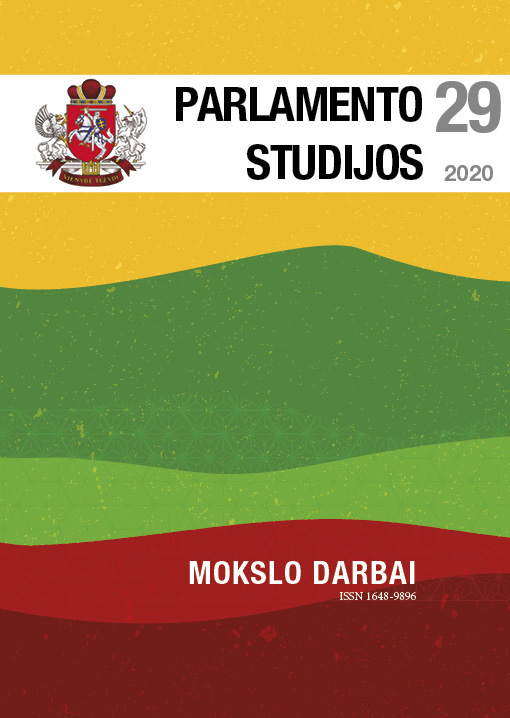Steigiamojo Seimo išrinkimas: lygių politinių teisių įsiteisėjimas valstybėje
DOI:
https://doi.org/10.51740/ps.vi29.159Keywords:
women movement, Constituent Assembly, political and citizen rightsAbstract
After the announcement about the elections to the Constituent Assembly parties made their lists. About 30 parties and organizations presented the list of their candidates in the electoral districts. Most often women were included into the second pentad and sometimes into the second decade except one district where G. Petkevicaite was the first candidate on the list.
The women candidates to the Constituent Assembly were educated; most of them single, having a social status. Most of the women candidates were active and well-known leaders in the women movement. Another feature of the women candidates was that they were young.
In 1920, April 14–15, the Constituent Assembly was elected by the direct elections. From these 150 parliamentarians 8 were women, which made up 5.3 percent. The following women were elected from the list of Lithuanian Christian Democrats block: M. Draugelyte-Galdikiene, E. Spudaite-Gvildiene, M. Lukosiute, V. Mackevicaite, O. Muraskaite-Rasiukaitiene, S. Stakauskaite; from the lists of Lithuanian Socialists Nationalists Democrats and Lithuanian Farmers Union – G. Petkevicaite-Bite and F. Bortkeviciene. No women were elected to the Constituent Assembly from the list of social democrats. Women who received the political right to vote and to be elected took an active part in the elections to the Constituent Assembly.
In 1920, May 15, the Constituent Assembly began in Kaunas Musical Theater. G. Petkevicaite-Bite was its leader until the formation of standing presidium and O. Muraskaite-Raciukaitiene was its secretary. This was a huge achievement for the women movement.
G. Petkevicaite as the head of the Constituent Assembly at the beginning of her speech on the opening day of the Constituent Assembly stated that the rendering of the political rights for women was the reward for women for their long and deliberate activities in the restoration of the state. By this she desired to deny the existing superstition in the society that Lithuanian women received the rights of elections in a very easy way.
Women parliamentarians worked in the committees of Education and Bookstore, Work and Social Security and Health, Work and Social Security








 The metadata of the scholarly journals and publications of the Lithuanian National Martynas Mažvydas Library is distributed by
The metadata of the scholarly journals and publications of the Lithuanian National Martynas Mažvydas Library is distributed by 